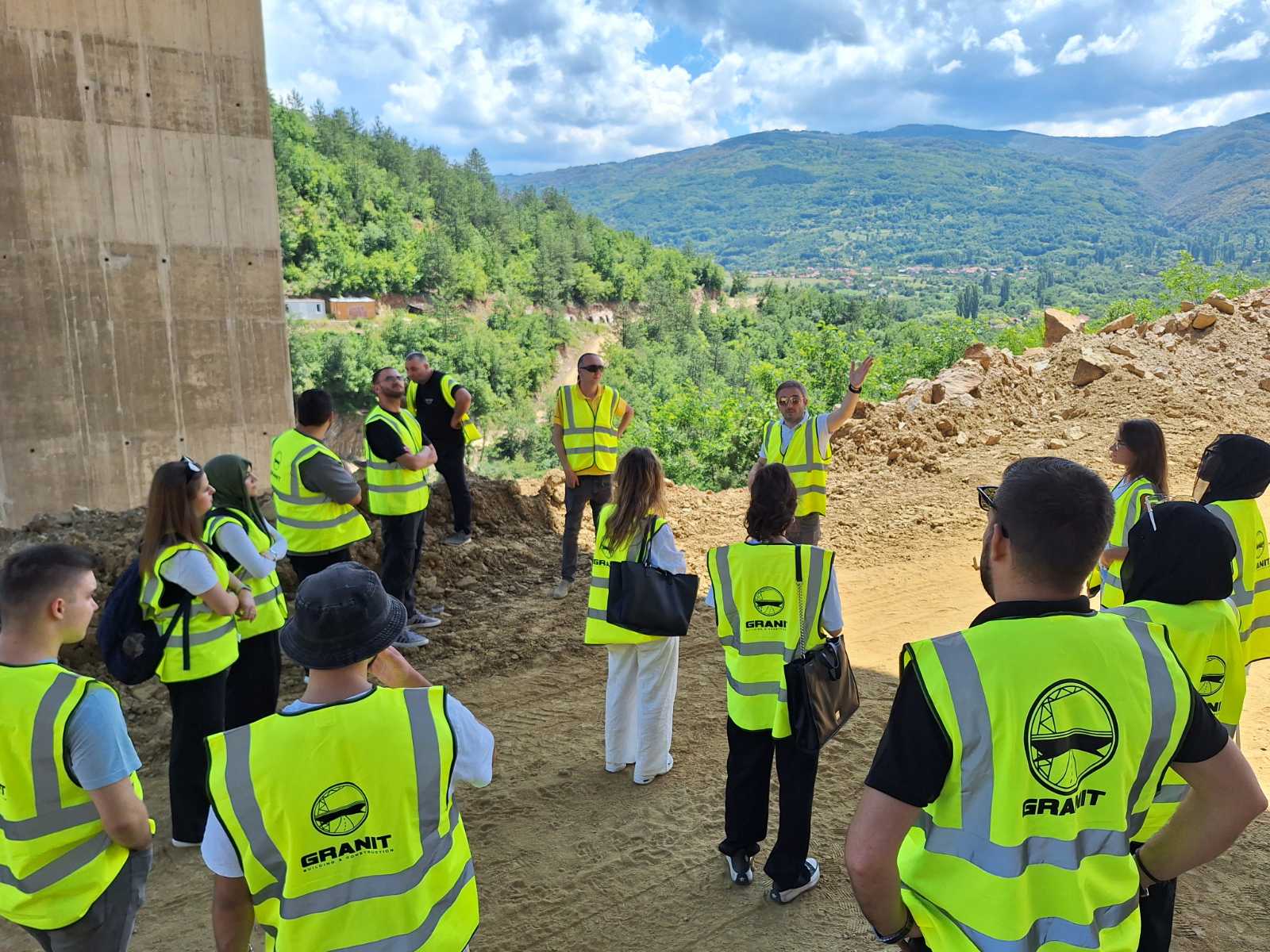Field Trip to Kriva Palanka - Dlabochica Express Road

Students from the Department of Civil Engineering and Architecture, led by Prof. Jordan Bojadjiev and Asst. Done Nikolovski, had the opportunity to visit the construction site of the Kriva Palanka - Dlabochica express road.
This field trip, organized on June 7, 2024, aims to provide our students with a practical overview of the courses from the Civil Engineering Department and present the complexities and possible challenges of a large-scale infrastructure project.
Project Overview
We visited the second section of the Kriva Palanka - Dlabochica express road, with a total length of 10.5 km. This represents a significant infrastructure project aimed at improving East-West connectivity from the Bulgarian border, towards the far south-west of the country at the Albanian border.
The main contractor for the construction works is GRANIT AD, Skopje, a renowned company with extensive experience in large-scale civil engineering projects.
Structural Highlights
One of the main structural features of this express road is its eleven viaducts, all employing a consistent structural system. The superstructure of each viaduct consists of precast prestressed concrete T-section main girders with a reinforced concrete (RC) slab on top. The substructure is composed of abutments and piers, designed to support the superstructure effectively.
Slope Stability Solutions
The construction site also presented our students with different examples of designing structures for slope instabilities, which is a common challenge in road construction. Three different solutions were designed to address these instabilities:
1) Passive Anchors Connected with steel cables: This method involves the use of anchors that are fixed to the stable parts of the slope (bedrock) and connected to each other to provide additional stability.
2) Gravity (Cantilever) Retaining Walls: These walls are designed to resist the lateral pressure of the soil primarily through their weight and the cantilever action.
3) Combination of Passive Anchors with Gravity (Cantilever) Retaining Walls: In areas where additional support is necessary, a combination of both methods is used to ensure maximum stability.
Educational Value
This field trip was an invaluable experience for our students, offering them a chance to witness the application of theoretical knowledge in a real-world setting. They observed the complexities of large-scale construction, including the coordination of people and resources in diverse geological and landscape environments.
We extend our gratitude to GRANIT AD, Skopje for accommodating our visit and providing such a comprehensive tour of the site. This visit not only enriched our students' learning experience but also inspired them to consider a possible enrolment in the civil engineering industry.



